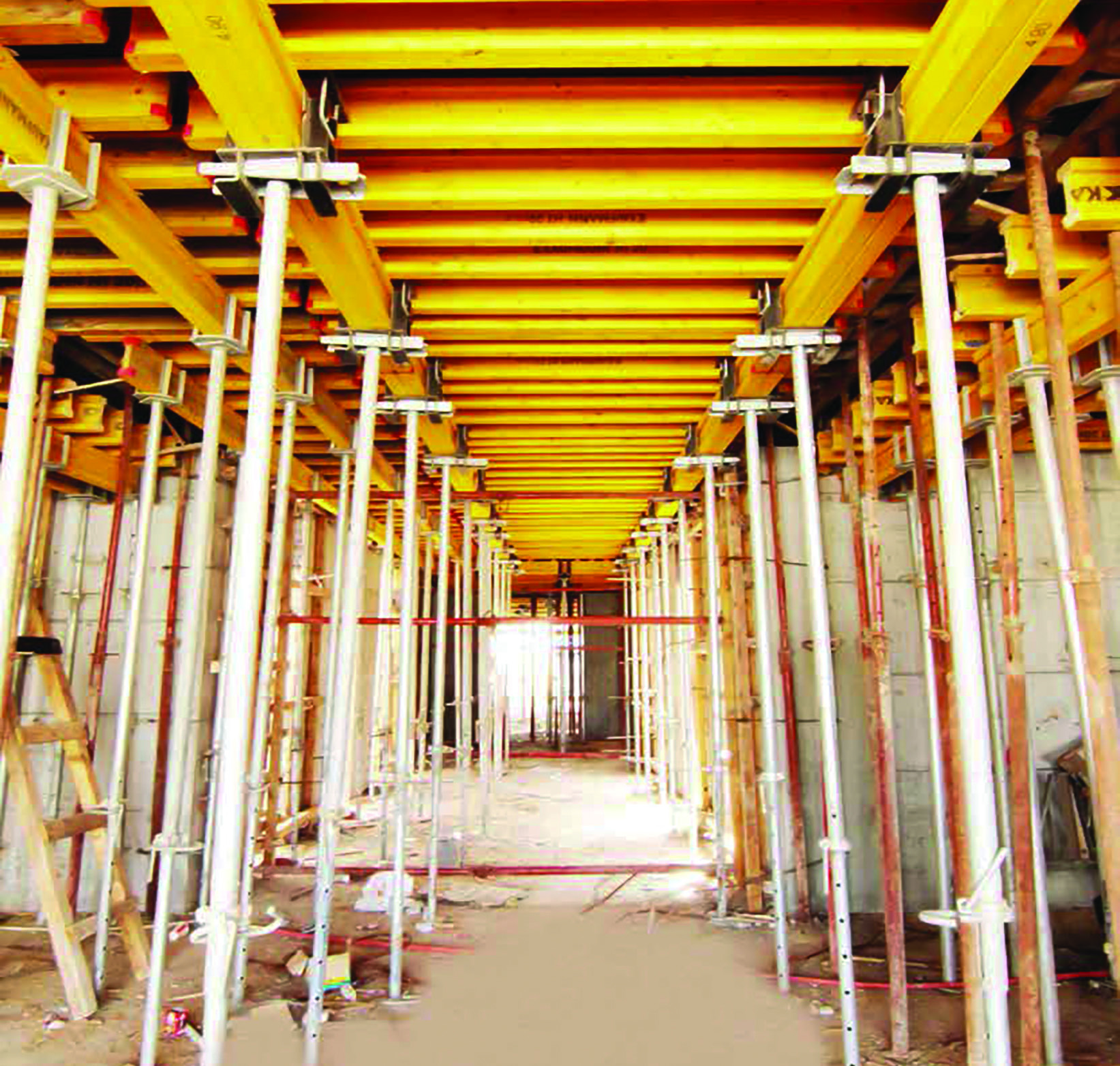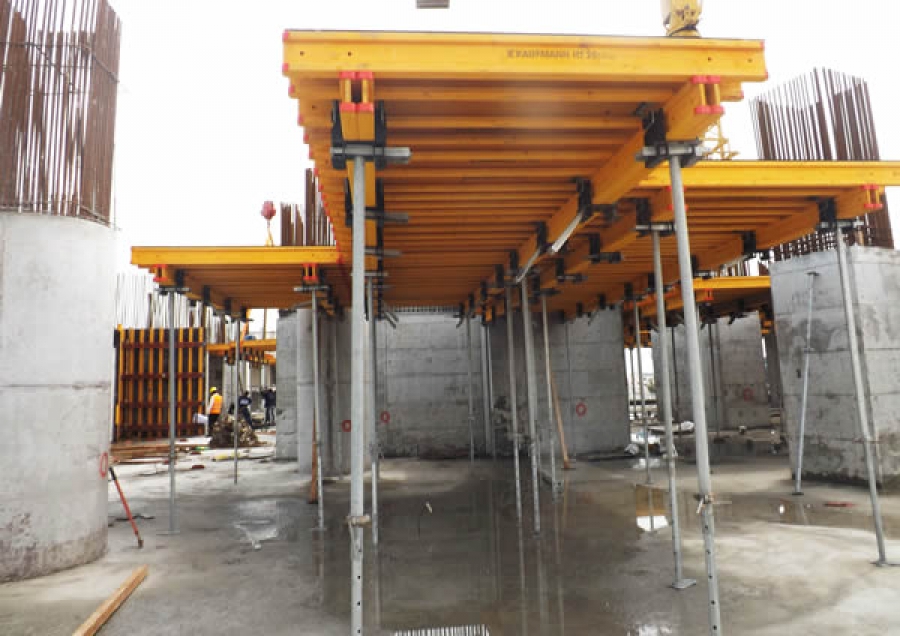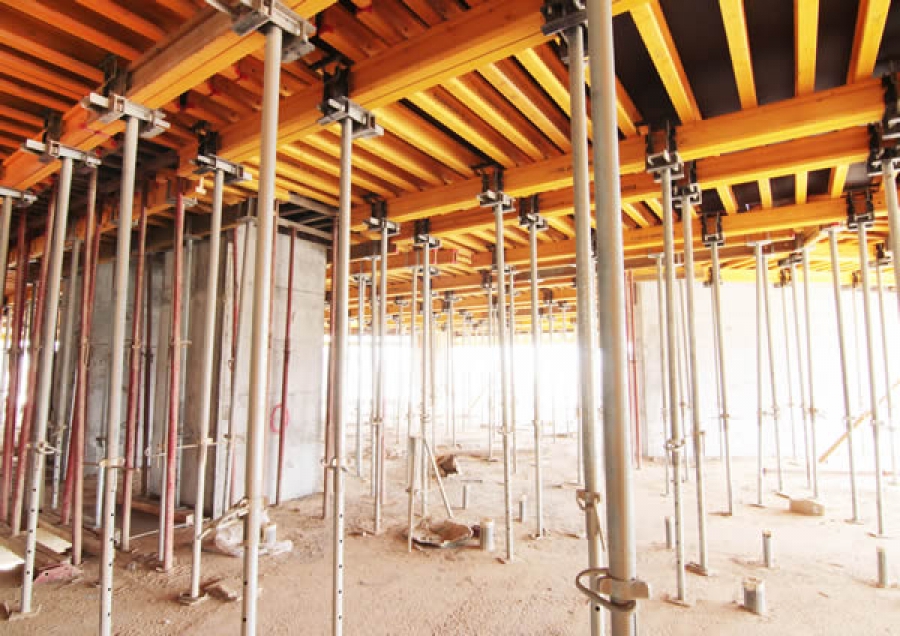manar Table
Flex Table
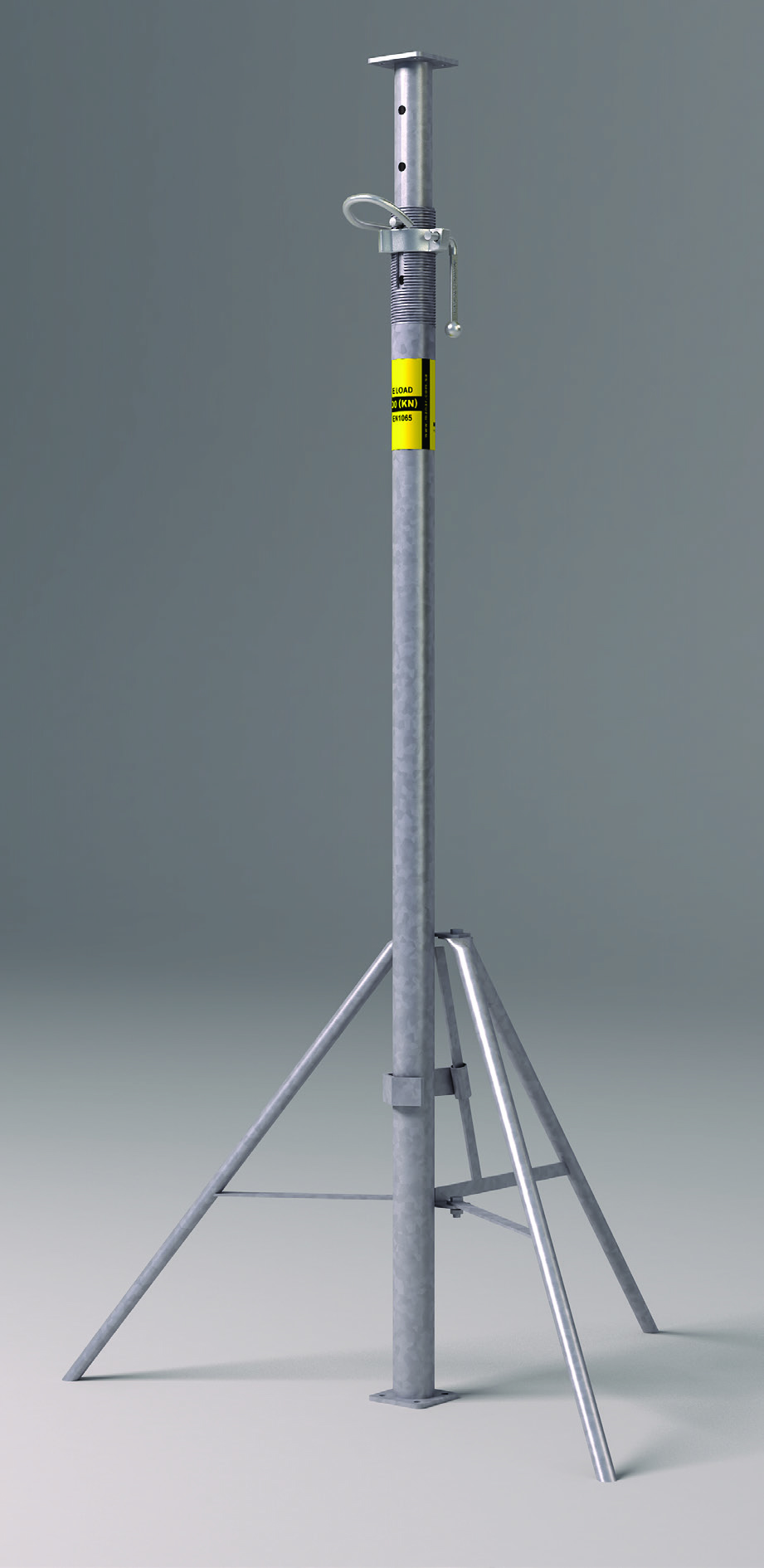
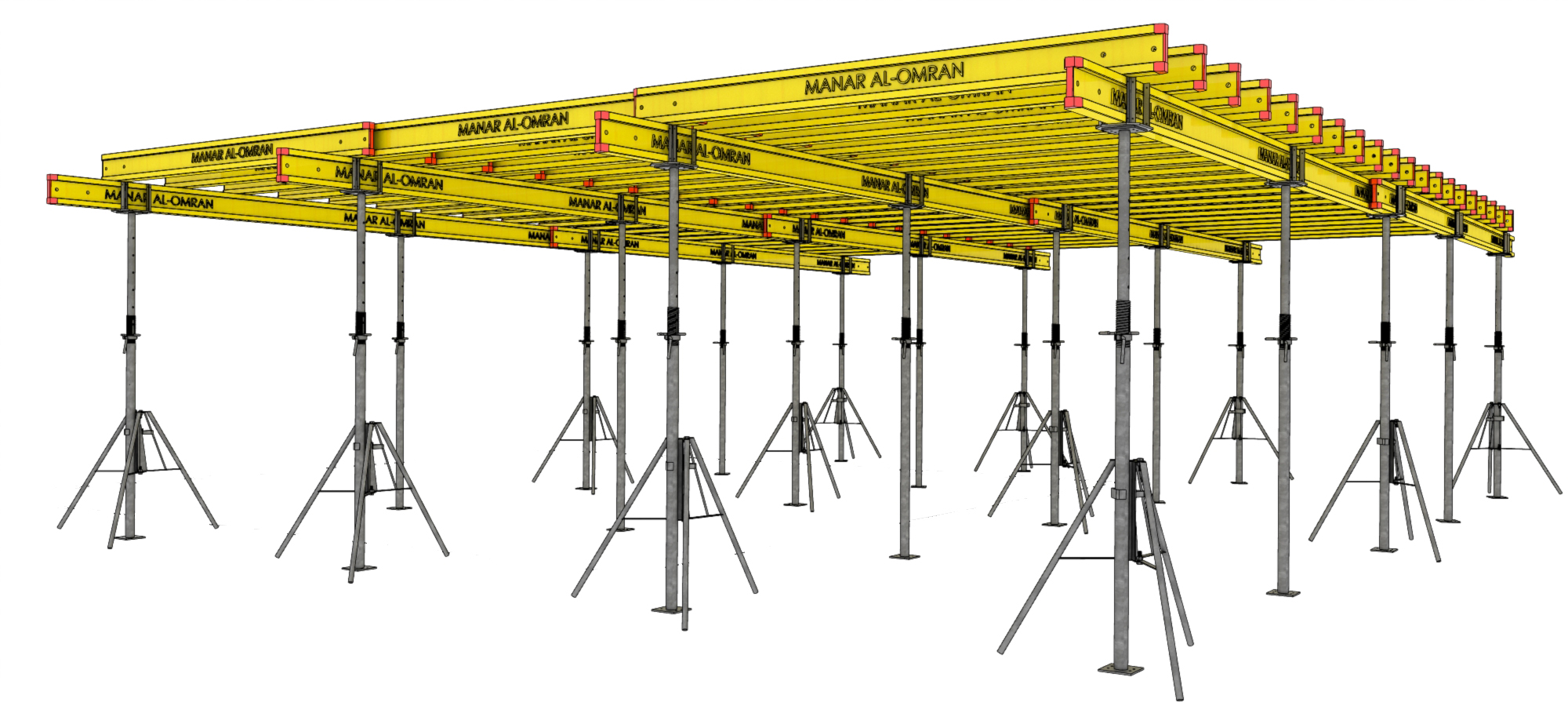
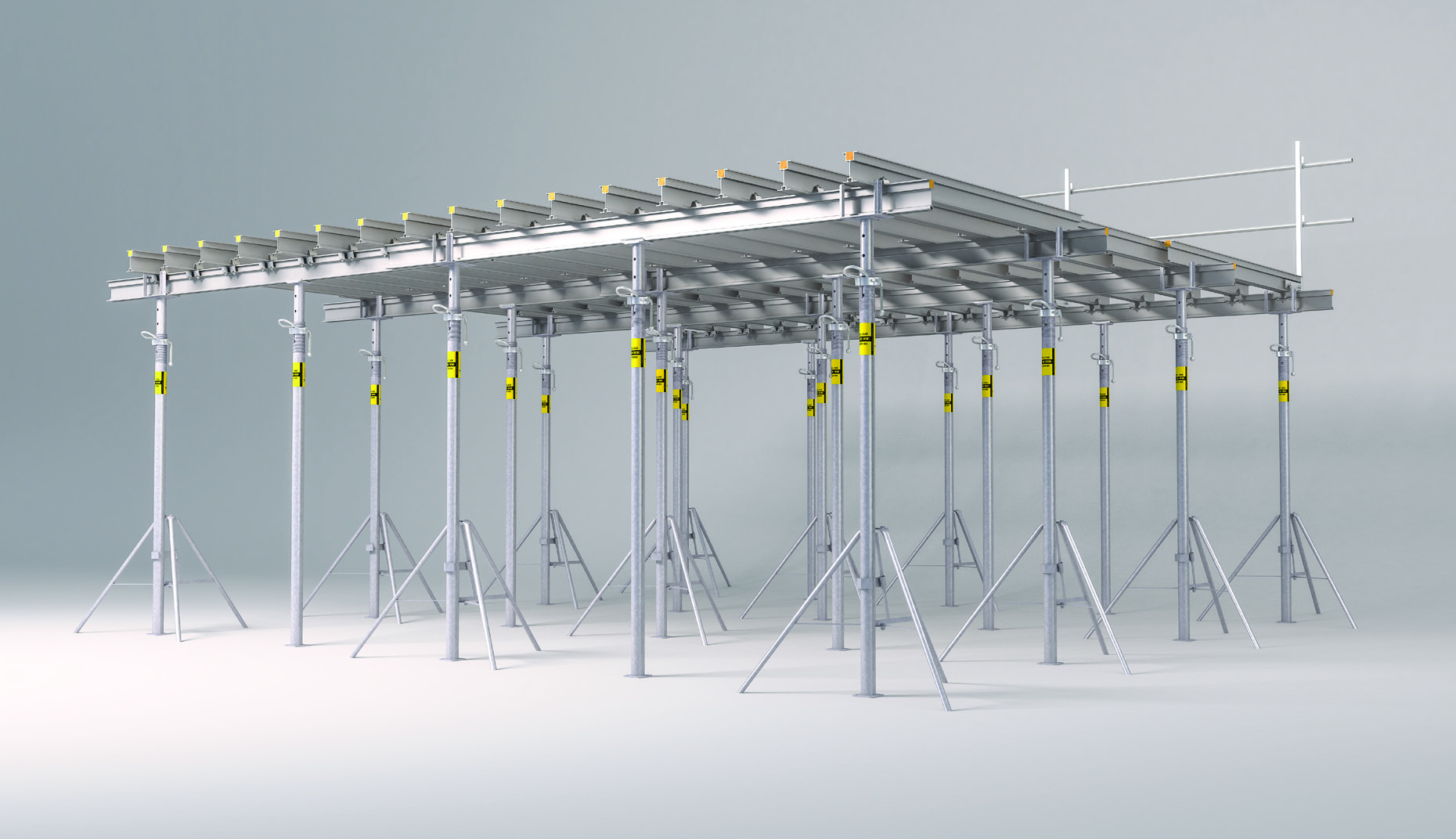
INTRODUCTION
MAO Flex is a slab formwork which is not restricted by modular dimensions and therefore doesn’t dictate to any rules of a modular system. Due to the versatility of the MAO Flex system, all geometric constructions can be realized easily and without difficulties. Maximum variability and adaptability makes the MAO Flex profitable. You are working demand oriented and are saving material, efforts and costs. Solidity of the construction, stability and robustness, as well as versatility and easy assembly characterise the MAO Flex system. The girder slab formwork also impresses by its favourable material costs and is therefore an economical solution wherever the wage level is low. The system can be used for different slab thicknesses with various geometries. The system can be dismantled easily by lowering the steel prop, tilting and pulling out the aluminum or timber beams. MAO Flex Table is a system with few numbers of different components, flexible to adjust to every layout with optimum use of material. The low weight of the components is an extra advantage of the system.
STRUCTURE SKETCH
The H20, and aluminum girders can be used as a secondary and primary girders. Although, it is possible to use only one type of these girders as a secondary and primary at the same time, i.e. same parts can be used in both directions. The ability of overlapping aluminum girders results in flexibility nature of the system to adapt for various different room sizes. Overlapping in any direction is possible in either direction. The fork head at the joint of the main girders prevents the aluminum girders from tilting.
ADVANTAGES
• System adaptable to any type of slab and height.
• It is optimized for the construction of all types of buildings with irregular surfaces, cantilevers, etc.
• Independent beams provide great flexibility.
• Very versatile for different slabs and heights based on the beams grid and shoring used.
• Moldable to irregular geometries
• Simple and easy to assemble.
• Small numbers of items.
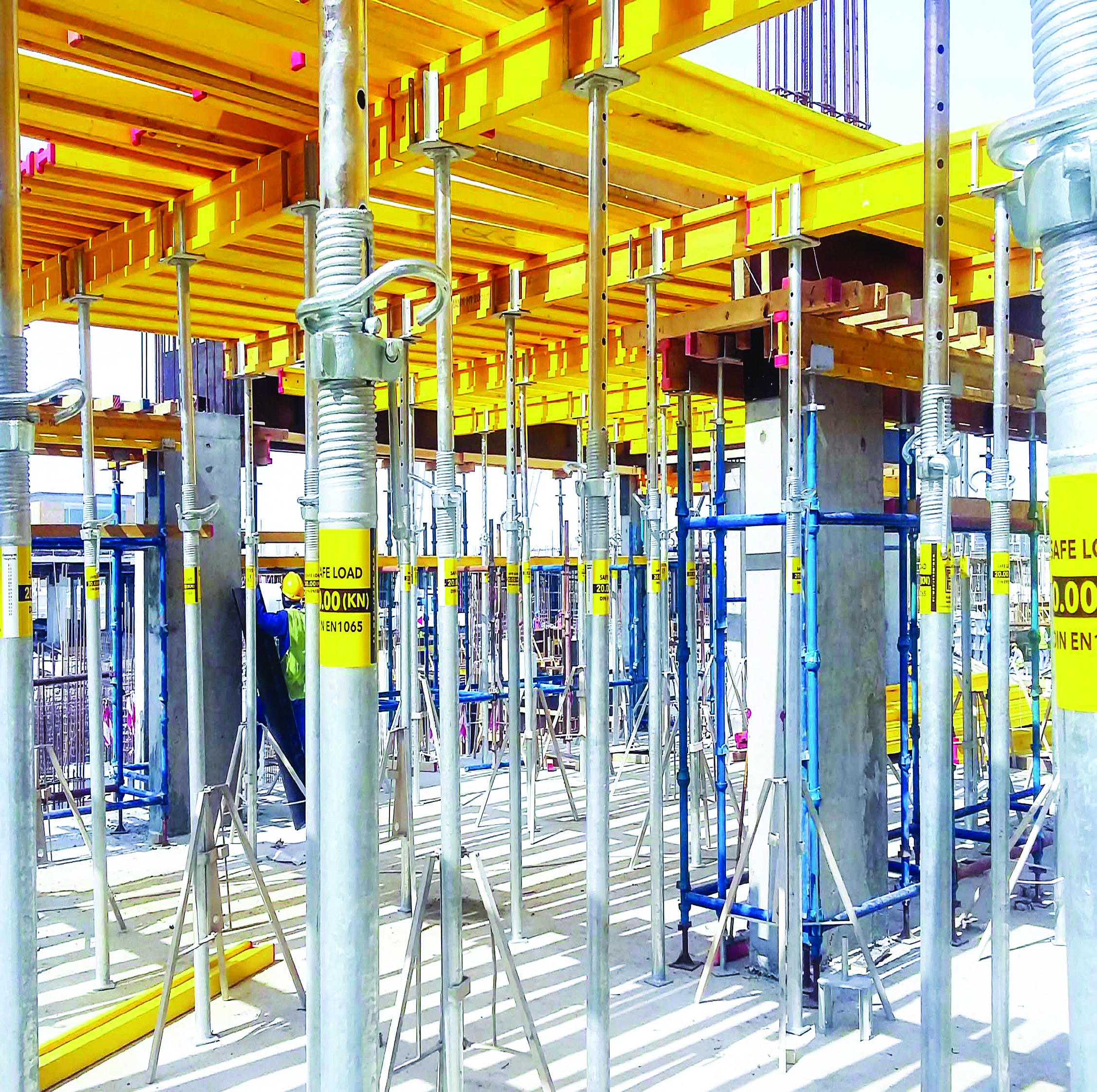

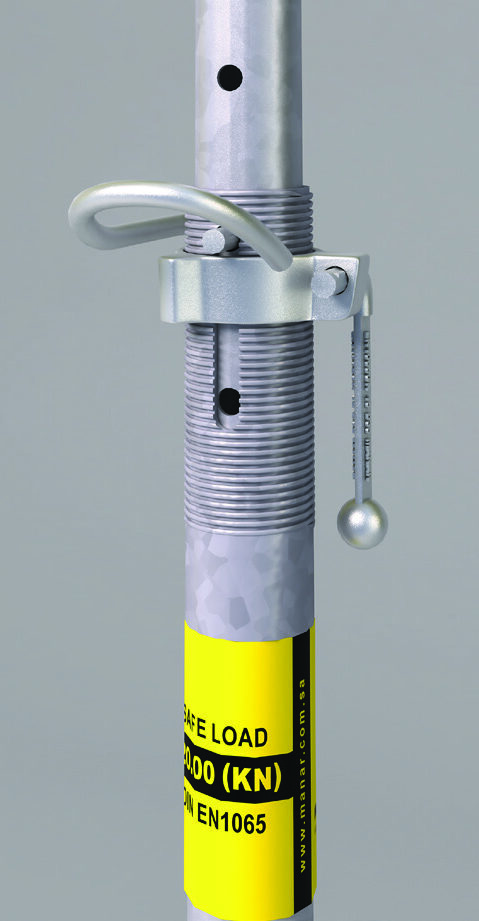
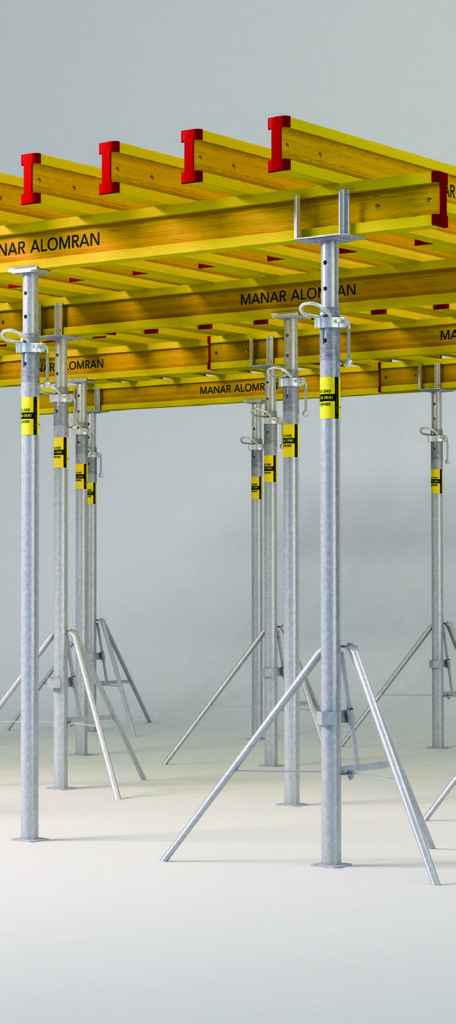
Table Form
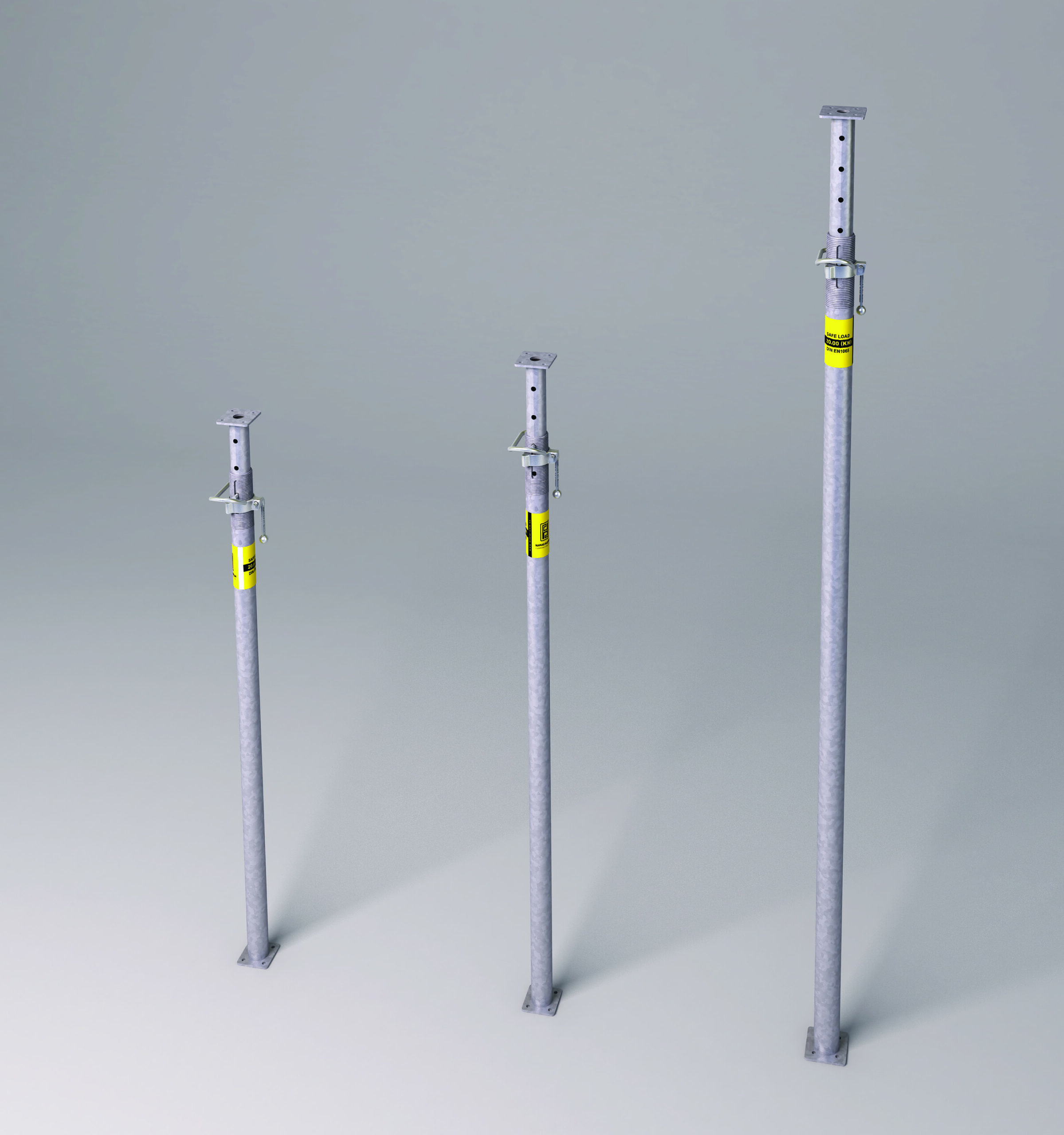
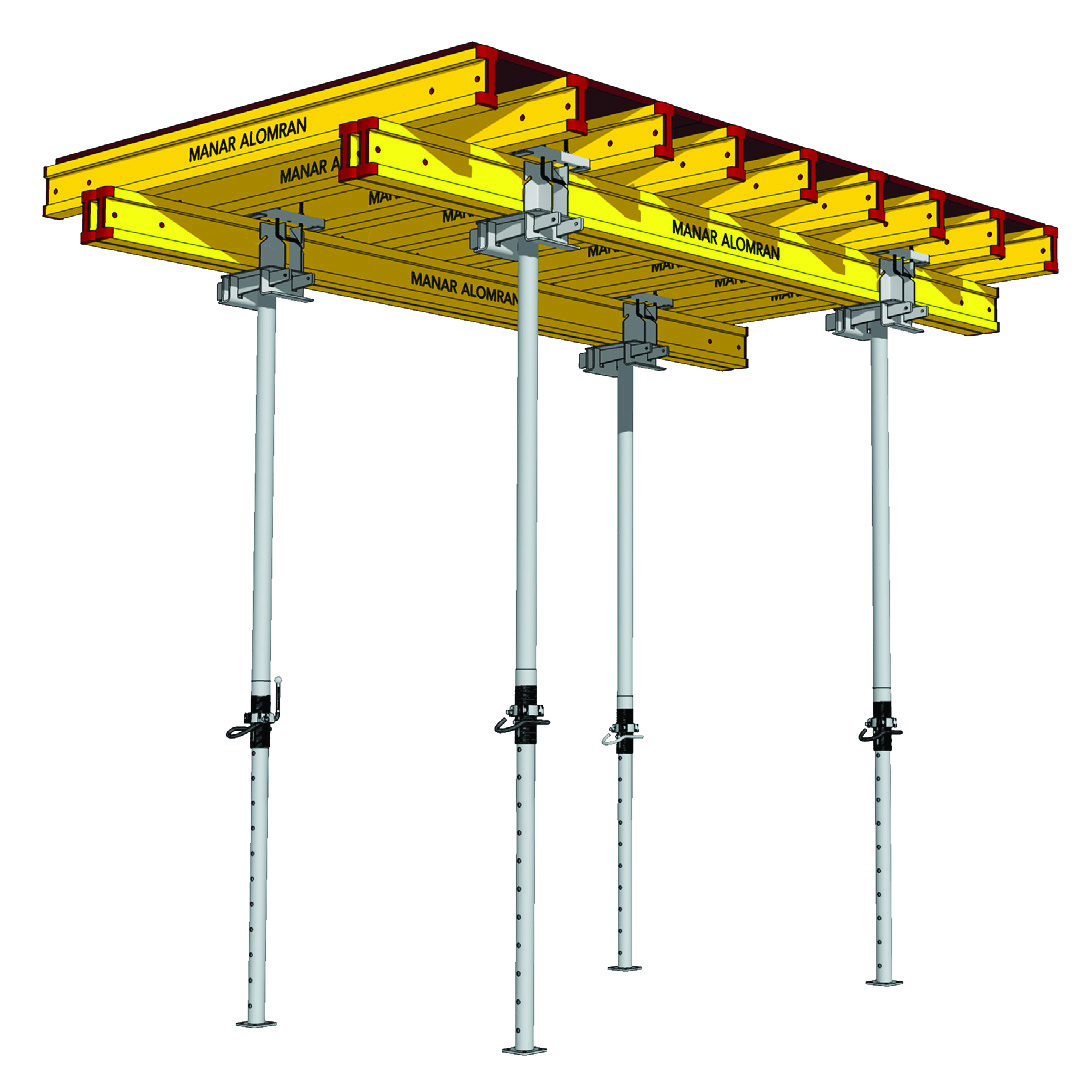
INTRODUCTION
Table formwork is a simple and efficient tool for slab. It is constructed of standard formwork elements that can be used for table formwork and for general forming and support applications. The system can be transported, assembled, used dismantled, and finally stored quickly and easily and easily. The standard H20 timber girder or the Aluminum graders can be used as decking elements for the tableunit. The system can be derived to the sited as completely pre-assembled units or they can be assembled easily at site location. Assembly of the table form is quite simple.
Table form is quite suitable for structures with open facades of repeatable application. Large savings in time, effort and manpower resulted from the usage of the system. The application of table formwork has proven reliability for such kinds of buildings.
PRACTICAL NOTES
1. Table form system is very simple and can be erected in the site easily, while the transportation, handling, and usage of the transport spreader and the shifting trolley can be applied be persons who have an adequate technical knowledge.
2. The system incorporates many features that are applied for various site requirements related to loading and geometry.
3. The system must be positioned on a solid and stable ground. During moving and shifting operation
of the tables, no persons, tools or materials are allowed to be on the tables.
4. Special attention is required for shifting and transport activities. Instructions of our technical representative are necessary.
5. Damages parts have to be stored out and replaced by new ones.
6. The load-bearing capacity of the crane must be considered.
7. Low stacking height when transported and stored.
8. Forming can continue seamlessly into infill zones and closure gaps.
9. The technically perfected individual components make a big contribution to higher speeds.
SYSTEM DIMENSIONS
TABLE 21MM
Table Form is easy and practical to set up and can be shifted and adapted very quickly.
This makes it a cost-effective and efficient way of carrying out large-area slab projects.
4 standard formats with an underlying “grid” logic:
• 2 .50 x 4.00 m
• 2 .50 x 5.00 m
• 2 .00 x 4.00 m
• 2 .00 x 5.00 m
